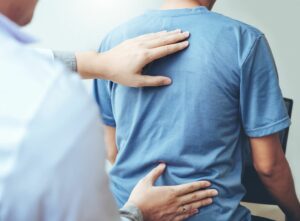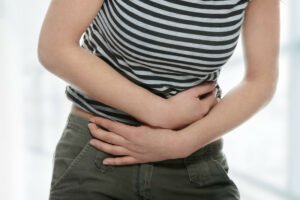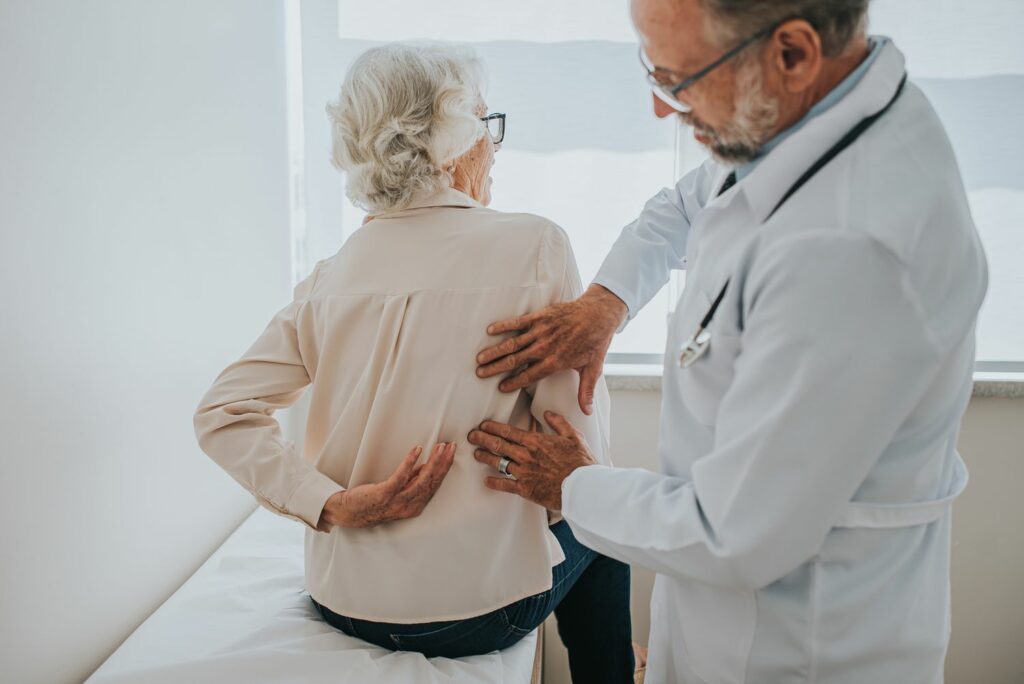Unraveling the complexities of health conditions can often be a daunting task. Diverticulitis, a common digestive disease, primarily affects the large intestine and causes a range of discomforts. One unexpected symptom often linked to this disease is back pain. How are the two related? This blog aims to explore the connection between diverticulitis and back pain, looking at causes, symptoms, treatments, and preventive measures.
Contents
Can Diverticulitis Make Your Back Hurt?
 Yes, diverticulitis can cause back pain, although it is not one of the most common symptoms. Diverticulitis is a condition that involves inflammation or infection of small pouches, called diverticula. This can form in your digestive system, usually in the lower part of the colon.
Yes, diverticulitis can cause back pain, although it is not one of the most common symptoms. Diverticulitis is a condition that involves inflammation or infection of small pouches, called diverticula. This can form in your digestive system, usually in the lower part of the colon.
However, if an inflamed or infected diverticulum is located near the nerves that lead to your back, it can cause back pain. This is because inflammation and swelling in one area of the body can sometimes impact nearby areas. The pain typically occurs in the lower back and may become worse when you move. This is similar to other types of back pain.
It’s also worth noting that pain can sometimes be referred to, meaning it’s felt in a different part of the body than where the problem is actually located.
What Is The Connection Between Diverticulitis And Back Pain?
The connection between diverticulitis and back pain lies primarily in the location and spread of inflammation or infection. When diverticula become inflamed or infected, they cause abdominal pain and discomfort. However, if the affected diverticula are located in a part of the colon that is near the back or if the inflammation is severe enough. Then, it can cause referred pain in the back.
Referred pain occurs when pain is felt at a location different from the source of the problem. This happens because our body’s network of nerves can transmit pain signals from one region to another. In the case of diverticulitis, the infection or inflammation of the diverticula in the colon may irritate nearby nerves, leading to back pain.
Furthermore, the physical stress and tension caused by the constant pain and discomfort of diverticulitis can lead to muscle strain, particularly in the back. The body might use other muscles to compensate for the pain, causing these muscles, such as those in the back, to become overworked and strained, leading to back pain.
What Causes Diverticulitis Back Pain?

Diverticulitis back pain can be caused by a combination of factors:
- Inflammation and Infection
Diverticulitis is characterized by inflammation and infection of the diverticula, small pouches that form in the lining of the digestive system. When the inflammation or infection is severe or located close to the back, it can irritate nearby nerves. This irritation can cause referred pain in the back, as our body sometimes perceives pain in a different location from the actual source.
- Referred Pain
This is a type of pain felt in an area other than the site of the painful stimulus. In the case of diverticulitis, if the affected diverticula are in a part of the colon that is near the nerves that lead to your back, the nerve irritation can cause perceived pain in the back.
- Muscle Strain
The discomfort caused by diverticulitis can also lead to physical stress and muscle tension. This is especially true if a person has altered their posture or movement patterns to minimize abdominal discomfort. Eventually, leading to back muscle strain or spasms.
- Complications of Diverticulitis
In some rare cases, complications of diverticulitis like abscesses, fistulas, or perforation of the bowel can cause severe pain that might radiate to the back.
It is important to note that if you experience persistent back pain along with other symptoms like abdominal pain, changes in bowel movements, fever, nausea, or vomiting, you should seek immediate medical attention. These could be signs of a serious condition like diverticulitis or other gastrointestinal disorders.
How To Treat Your Diverticulitis Back Pain?
Treating diverticulitis back pain involves addressing the underlying cause, which is the inflammation or infection of the diverticula in your digestive tract. If you’re diagnosed with diverticulitis and experiencing back pain, here are some treatment approaches your healthcare provider may recommend:
- Antibiotics: The initial treatment for diverticulitis often involves antibiotics to combat the infection.
- Pain Relief: Over-the-counter pain relievers, such as acetaminophen, can be used to help manage the pain. However, it’s important to avoid nonsteroidal anti-inflammatory drugs (NSAIDs) like ibuprofen, as they can worsen the gastrointestinal bleeding associated with diverticulitis.
- Dietary Changes: A liquid diet may be recommended at first to allow your digestive system to heal. Gradually, you can add low-fiber foods and then eventually transition back to a high-fiber diet. High-fiber diets can help soften waste material and help it pass more quickly through your colon, reducing the risk of diverticulitis.
- Rest: Rest is important to allow your body to recover. Once the acute phase of diverticulitis has passed, regular physical activity is beneficial. As it helps stimulate normal bowel function and reduces pressure inside your digestive tract.
In severe or recurrent cases of diverticulitis, or if complications arise, more invasive treatments may be necessary, such as:
- Hospitalization: Severe or complicated diverticulitis might require hospitalization to receive intravenous antibiotics or for monitoring.
- Surgery: In some cases, particularly with recurrent episodes or complications like abscesses, fistulas, or bowel obstruction, surgical intervention may be required. Surgery can involve removing the affected part of the colon, known as a colectomy.
- Physical Therapy: In cases where back pain persists, physical therapy can be helpful. A physical therapist can provide exercises and stretches to help reduce back pain, improve mobility, and strengthen the muscles of the back.
Remember, all treatments should be under the guidance of a healthcare provider. And the exact treatment plan will depend on the severity of your symptoms, the presence of any complications, and your overall health status.
How To Reduce The Risk of Diverticulitis Back Pain?

Reducing the risk of diverticulitis and associated back pain primarily involves strategies to prevent diverticulitis or manage it effectively when it does occur. Here are some tips:
- Adopt a High-Fiber Diet
Consuming a diet rich in fiber can help soften stool, making it easier to pass and reducing the pressure in your digestive system that can lead to diverticula formation. Include plenty of fruits, vegetables, whole grains, and legumes in your diet.
- Stay Hydrated
Drinking plenty of fluids can help prevent constipation by keeping your stool soft. That in turn reduces the risk of diverticulitis.
- Regular Exercise
Physical activity helps stimulate normal bowel function and reduce pressure inside your digestive tract, which can help prevent diverticula from forming.
- Maintain a Healthy Weight
Obesity is associated with a higher risk of diverticulitis. Maintaining a healthy weight through a balanced diet and regular exercise can help reduce this risk.
- Quit Smoking
Smoking is a known risk factor for diverticulitis. Quitting smoking can help reduce the risk of diverticulitis and improve your overall health.
- Avoid Straining During Bowel Movements
Straining can increase pressure in the colon, which can lead to the formation of diverticula.
- Limit Intake of Red Meat
Some research suggests that a diet high in red meat and low in fiber may be linked with an increased risk of diverticulitis.
- Regular Check-ups
Regular medical check-ups can help detect any health issues early, including diverticulosis (presence of diverticula) or diverticulitis, and manage them effectively.
Remember that while these steps can help reduce the risk of diverticulitis and the associated back pain, they may not eliminate the risk entirely. It’s always important to maintain regular communication with your healthcare provider. Particularly if you’re at an increased risk for diverticulitis or if you start experiencing any concerning symptoms.
Conclusion
In conclusion, diverticulitis back pain is a complex interplay of inflammation, referred pain, and occasionally, muscle strain or severe complications. Understanding the symptoms, causes, and treatments for these conditions is a critical step toward effective management and prevention. By incorporating lifestyle changes, one can significantly reduce the risk of diverticulitis and associated back pain.
However, if you experience persistent back pain or other concerning symptoms, it’s crucial to seek medical attention promptly for accurate diagnosis and treatment. With the right knowledge and proactive healthcare decisions, you can successfully navigate and manage your health journey, ensuring a better quality of life.
If you’re experiencing Back pain, physical therapy for back pain at PhysioMantra can help: Book an online physical therapy session.



